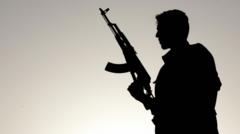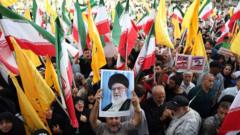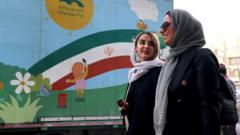A journalist compares the current conflict to past wars, noting significant shifts in technology and disinformation impacting public perception and safety.
India-Pakistan Conflict Sees Rising Tensions As New Technologies Change the Game

India-Pakistan Conflict Sees Rising Tensions As New Technologies Change the Game
The situation between India and Pakistan escalates, reflecting a mix of historical tension and modern warfare elements.
As the conflict between India and Pakistan intensifies, particularly in the volatile Kashmir region, many are reflecting on the fear reminiscent of past wars. For reporters like me, this current climate feels eerily familiar to what was experienced back in 1971 — the year of the last major outright war between the two nations. I was a young teenager then, caught between the sirens and blackouts, much like the chaos observed over the past few days. The echoes of history seem to resonate deeply as I witness familiar patterns of unrest evolving into new forms.
In 1971, our primary source of news was limited to a few radio broadcasts. We would anxiously gather around to listen for reports of aerial dogfights, which left us captivated and frightened. Today, the conflicts are again unfolding in northern India, near the Indo-Pakistani border, but the landscape of warfare has transformed dramatically. Recent exchanges have employed an alarming array of modern weaponry, including drones and missiles targeting civilian areas, marking a notable escalation in their military capabilities.
What compounds the situation is the pervasive climate of misinformation disseminated through social media and television, creating a more complicated reporting environment than I've ever encountered in three decades as a journalist. This barrage of conflicting narratives fuels panic and confusion among the populace, making it increasingly difficult to obtain and share factual accounts of the events unfolding.
While the expression of nationalist sentiments may have evolved, the fervor remains potent. In the 1970s, India was a struggling nation with a largely impoverished demographic; local communities rallied together to support the military with fundraising efforts. Fast forward to today, and India, now the world's fifth-largest economy and a burgeoning technological force, faces heightened risks of escalating conflict. As both sides acquire sophisticated weapons and drones, traditional borders become less significant, potentially transforming any part of the country into a combat zone.
The past and the present are intertwined in this ongoing conflict, and it underscores the complexity of modern warfare, where the stakes are higher than ever before.
In 1971, our primary source of news was limited to a few radio broadcasts. We would anxiously gather around to listen for reports of aerial dogfights, which left us captivated and frightened. Today, the conflicts are again unfolding in northern India, near the Indo-Pakistani border, but the landscape of warfare has transformed dramatically. Recent exchanges have employed an alarming array of modern weaponry, including drones and missiles targeting civilian areas, marking a notable escalation in their military capabilities.
What compounds the situation is the pervasive climate of misinformation disseminated through social media and television, creating a more complicated reporting environment than I've ever encountered in three decades as a journalist. This barrage of conflicting narratives fuels panic and confusion among the populace, making it increasingly difficult to obtain and share factual accounts of the events unfolding.
While the expression of nationalist sentiments may have evolved, the fervor remains potent. In the 1970s, India was a struggling nation with a largely impoverished demographic; local communities rallied together to support the military with fundraising efforts. Fast forward to today, and India, now the world's fifth-largest economy and a burgeoning technological force, faces heightened risks of escalating conflict. As both sides acquire sophisticated weapons and drones, traditional borders become less significant, potentially transforming any part of the country into a combat zone.
The past and the present are intertwined in this ongoing conflict, and it underscores the complexity of modern warfare, where the stakes are higher than ever before.





















